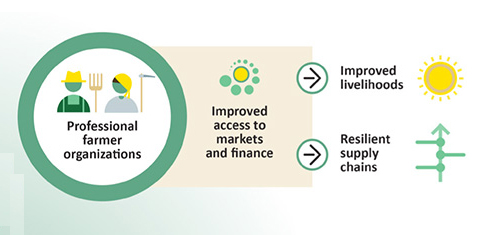OUR BUSINESS
1. INNOVATIVE AND SUSTAINABLE AQUACULTURE
Transforming aquaculture from the basis of traceability to a transparent visibility through modification of supply chains, linking production as well as consumption by introducing sophisticated systems and innovative products assuring food safety.
Bringing Innovations exceeding traditional paradigms in aquaculture sector and scaling up winning advanced technologies to industrial level – AQUAFARMING THE INDUSTRIAL WAY following the CIRCULAR ECONOMY model.
Setting up innovative farming technologies/systems adapted to local context and addressing constraints through Turnkey solutions+ and offering resolutions for environmental, social, and food safety issues associated with aquaculture.
Relocating aquaculture farms viz., Land based or Aquatic environment based with successful and proven strategies advocated through our time-tested Business Aquaculture Designs.
Sofós Aqua expertise include:
LAND BASED FARMING (Closed Loop Systems)
- RAS
- RAS + Agriculture
- RAS + Hydroponics
- Aquaponics + Commercial Scale Systems
- Aquaponics + Home Scale Units
- Aquaponics + Aquaria
- Bio - Secured Weaning Nurseries
AQUATIC SYSTEM BASED FARMING
- Conversion of existing Pond into Open Pond RAS
- Open pond Biofloc systems
- Cages – Both marine and reservoir-based
ECOLOGICAL ENGINEERING
Application of ecological engineering techniques in both the nonfed and fed aquaculture systems makes the aquaculture industry an environmentally sustainable one. We design an aquaculture system (IMTA - Integrated Multi Trophic Aquaculture) utilizing the ecological engineering principles of species symbiosis with material recycling and regeneration.
INNOVATIVE PRODUCTS
Bringing new/innovative products into the production process through new species, genetic inputs, nutritional effects and bioactive herbal treatments and microbial manipulation and control etc.
FARM AUTOMATION
Automated farm operation such as automatic feeder, sensor- based water quality monitoring and bioengineered aeration systems etc.
FOOD SAFETY
Holistic monitoring of entire supply chain involved in the fisheries & aquaculture production viz., the breadth of value chain involved in sea food production, processing and principal maritime activities reaching consumers utilizing Blockchain Technology, Synthetic Aperture Radar (SAR) technology and AI for solving the food safety issues pointed out by SIMP of USA, EU and other sea food importing nations.
WASTE INTO WEALTH
Both liquid and solid wastes formed in every stage of supply chain involved in both production and processing of seafood accounts for an average 40%. There are many investment and business opportunities for converting them into various low value to high value by-products.
THINK BEYOND SOLVE DIFFERENT





